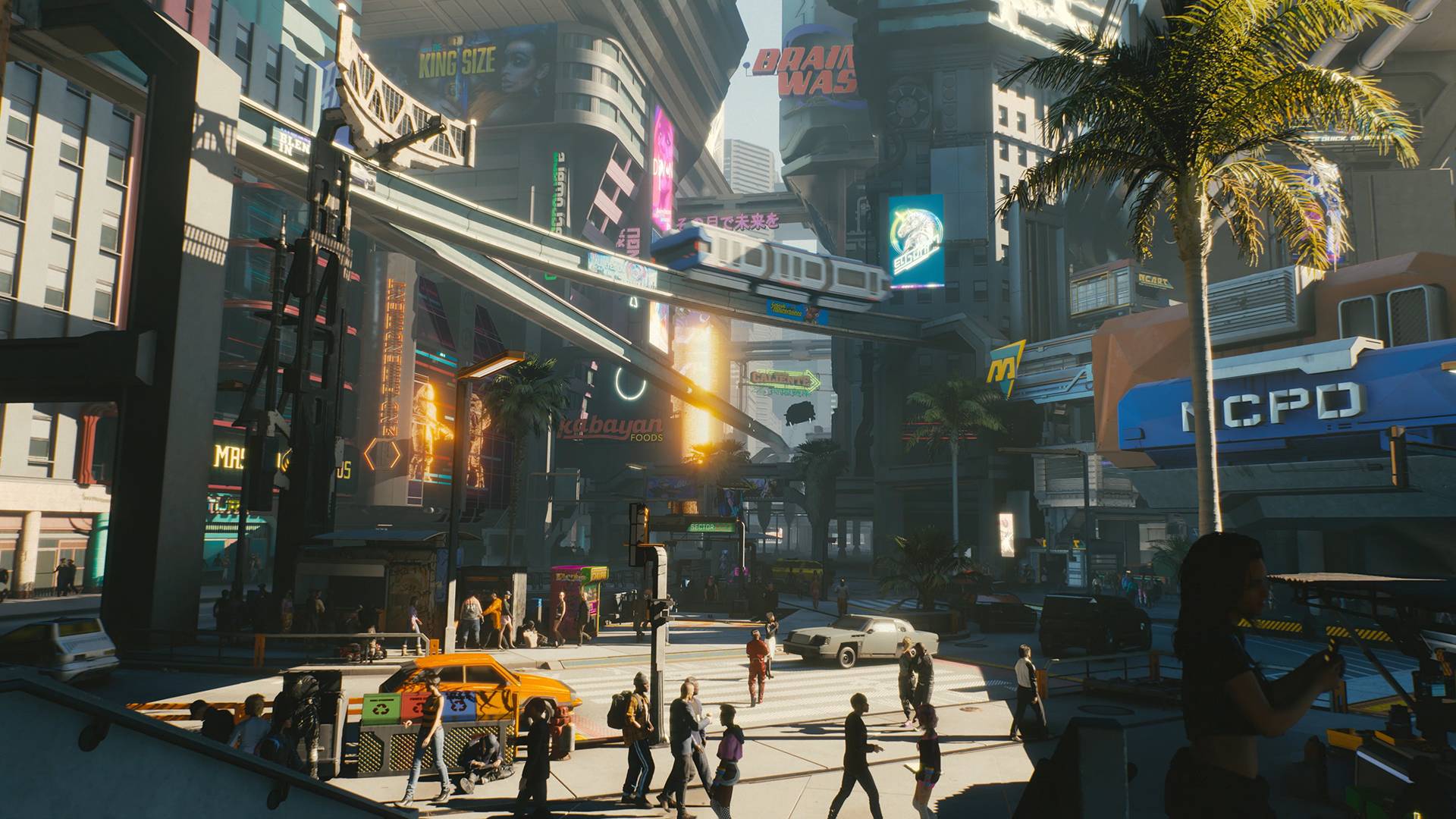I finally upgraded to a 4K TV setup recently after a friend who couldn’t believe I was still gaming at a 1080p resolution coaxed me into it. “What’s the problem?” I thought, at the risk of sounding woefully out of touch. 1080p still provides solid image quality across all platforms, from Xbox Series X to the humble Nintendo Switch.
Still, I listened to their advice and took the leap, and I was immediately glad I did. The upgrade in image quality was stark, and I was noticing little details in games that I never even knew were there. But the best part? 4K resolution wasn’t even the biggest win I got for upgrading. That accolade instead has to go to HDR.
HDR (high dynamic range) essentially does what it says on the tin. In layman’s terms, HDR expands the range of colors that can be displayed on screen. The wider variety of colors unlocked by HDR allows for much richer palettes along with inkier blacks. Think of it like a restoration of a faded painting - it’s the same image with a completely fresh coat of paint.
- The best HDR monitors
- HDR explained: better results from multiple exposures
- Best 4K TV: the best Ultra HD TVs actually worth buying
With 4K and 8K resolutions being the big buzzwords that attract consumers to new TVs and monitors, HDR can often go overlooked as a genuinely brilliant feature. Higher image quality is obviously lovely, but what really makes those images pop is the beauty that HDR brings to the table.
Seeing the light

With my newly acquired HDR-ready TV, I knew the first thing I wanted to play was a bright, colorful game. One that already looked stunning on my previous 1080p, non-HDR display. The choice was obvious: Sea of Thieves.
Rare’s swashbuckling pirate-em-up is one of the most visually impressive games to come out in the past few years, so I was certain a HDR display would bring out the best that Sea of Thieves’ visuals had to offer. It never felt so good to be right.
"The vibrant, tropical paradise of Sea of Thieves’ countless islands feel like they were designed with HDR in mind."
The vibrant, tropical paradise of Sea of Thieves’ countless islands feel like they were designed with HDR in mind. The setting sun contrasts beautifully against the darkened waves of the ocean, and indoor locations like taverns felt both homely and bustling with life thanks to HDR perfectly complementing the game’s stellar lighting.
From that moment on, I was hooked. HDR had sunk its vivid and glistening claws into my brain, and seeing games I was intimately familiar with look all shiny and new gave me a childlike sense of awe and wonder - two rare and precious commodities for a deeply jaded man in his late 20s.
Next up was Cyberpunk 2077, a game that I genuinely enjoyed despite its myriad shortcomings and no shortage of progress-halting bugs. With HDR enabled, the neon glows of Night City shone with hues I didn’t even know were there before. Light bounced much more believably off the rain-soaked tarmac, and the usually oppressive advertisements beaming overhead became eerily mesmerizing.
Old games, new colors

So HDR works incredibly well on current gen hardware, that’s nothing new, right? Sure, but what you might not know is how Xbox Series X in particular seamlessly integrates an Auto HDR feature into backwards compatible titles. Auto HDR implements machine learning to retroactively throw a fresh HDR visual upgrade over older games that don’t support the feature, or weren’t developed with HDR-capable displays in mind.
Auto HDR, for the most part, works marvellously, injecting so much extra color into older titles from the Xbox and Xbox 360 generations. While the system-level solution doesn’t translate perfectly for all titles (many an Xbox 360 title daubed in the drab greys and browns that was the style of the time can appear a bit washed out), by and large you’ll see noticeable visual improvements to the classics you grew up playing.
"Auto HDR, for the most part, works marvelously, injecting so much extra color into older titles from the Xbox and Xbox 360 generations."
To put Auto HDR to the test, I loaded up a selection of backwards compatible games on Xbox Series X. I started with Jet Set Radio, a game already lauded for its colorful cel-shaded graphics (and probably my favorite game of all time, but that’s besides the point). HDR obviously doesn’t improve the graphical fidelity of this two-decades-old Dreamcast title, but what it does do is elevate the color palette even more without bordering on oversaturation.
The same can be said of the similarly color-rich Viva Pinata. Rare really does have a penchant for this kind of thing, doesn’t it? Of course, Viva Pinata and its sequel are both games that still look stunning on base Xbox 360 hardware - all HDR is doing is ensuring as much color can be squeezed into the game as humanly possible. As a result, this duo of papery pet management sims looks better than I ever thought was possible.

Impossible to go back
Now that I’ve got HDR in my life, I can’t imagine owning a display without it. Hopefully this won’t come across as elitist in any way, but when I look at screens that don’t benefit from HDR, that lack of extra color depth is more apparent than ever.
The best part? The barrier for entry to HDR is now fairly low. You don’t need to splash out on an expensive, top of the line 4K TV to experience HDR, as it can also be found in many 1080p and 1440p TVs and monitors.
Regardless of your budget, though, I can wholeheartedly recommend HDR as a priority over 4K. While 4K has the obvious benefit of providing sharper image quality with a higher pixel count, you’re not necessarily getting that extra punch of color and specular highlights that HDR can inject, and if I had to choose, it’s the feature I’d easily pick over 4K any day.
- 4K HDR TVs: here's what to look for before buying
from TechRadar - All the latest technology news https://ift.tt/3mUx7FC


0 Comments